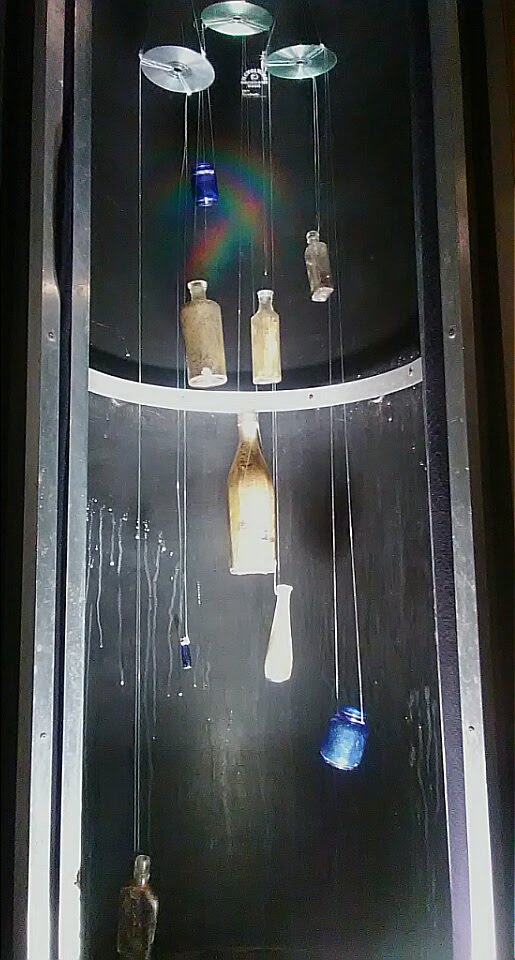Another aspect of the woods that keeps me coming back is the supply of glass bottles and jars I find in a few specific places every time I go. This area, as I’ve defined as “Glassland” sits between the Firepits and Swampland on the far end of the creek. I’m not quite sure why this area has so many “junk spots”, but piles of ceramics, pipes, metals, porcelain, and glass scatter this area. I’ve found jars that date back to the 1880s, a marble tombstone, and a giant head-sized unidentifiable mound of wax/sap. After being told that there once was a water reservoir somewhere around what’s known today as “the Berlin Wall” in the woods, I’d like to assume that this may have been the area, since moist locations contain and preserve old junk.
After my collection grew to over 20 jars and bottles, I was given an assignment in 3D design class to transform something with little-to-no value into something valuable/meaningful. Though some of the bottles were considered “antique”, there’s a very small market for glass collecting and thought this would be the ideal opportunity to give these old dirty bottles new life and purpose. I chose jars of different sizes, filled each one with a glow-in-the-dark element (paint or marbles), bones, and seashells. I then strung them at different lengths with fishing wire and attached them to some old CDs and a plastic/metal hanger. The finished piece resembled a mobile or chandelier, and I chose to exhibit it in the Dark Room of the Photo Studio. When viewers came in, they could see the strung up bottles with a light shining from below to make a rainbow effect with the holographic bottoms of CDs. Then the lights went off and the luminous contents of the jars were able to be seen.

I like to believe that the woods is just one big jar, accumulating and preserving everything inside. Turtles can be preserved for months in the icy lake, but somehow thaw out and continue to live. I know this happens in many places, but it makes me think of the conditions that must be met to hold on to things. For the jars to remain uncracked and undamaged, they get washed to a tree base or a nook in a river bend and get buried, but so many things have to go exactly right for those things to happen. For every 10 pieces of glass I find, usually, only one will be intact, since it’s so rare those conditions are met. I wonder if the same goes for the turtles. I’ve seen them frozen in blocks of ice, just inches from the surface, but how many actually survive the freezes and what sort of conditions must be met to survive this way?
